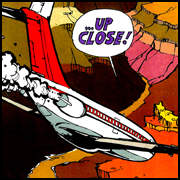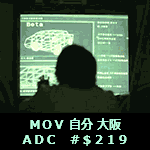|
Thanks, I can't tell if I'm happy to save the money on the pistons or bummed now I have to clean all of them (although I have 6 pretty good so far, 6 I haven't touched)
|
|
|
|

|
| # ? May 16, 2024 12:16 |
|
Iím trying to learn more about the esoteric bits of my bike so Iíve taken a bit of interest in the ABS system. Routing itself isnít confusing at all, both master cylinders feed into the respective pedal actuators (??) which in turn feed into the ABS control unit (?? I have no idea what the technical term is), the ABS unit then feeds the actual brake calipers based on whatever itís deciding is safe given input from the wheel speed sensors. I noticed that all the fluid lines are rubber with the exception of the line that runs from the rear brake pedal switch to the ABS unit which is a stiff bent steel (??) pipe. Iím trying to figure whether this is simply because the pipe is being routed around body work and a hot engine so itís best to keep it from being a floppy rubber hose in spots where it is expected to experience zero flex?
|
|
|
|
Martytoof posted:Iím trying to learn more about the esoteric bits of my bike so Iíve taken a bit of interest in the ABS system. this is your brain on Ontario roads
|
|
|
|
Ontario ďroadsĒ 😌
some kinda jackal fucked around with this message at 04:38 on Oct 14, 2020 |
|
|
Martytoof posted:I’m trying to learn more about the esoteric bits of my bike so I’ve taken a bit of interest in the ABS system. If the brake lines could be hard steel the whole way along the would be, a completely incompressible line is ideal. The rubber parts are just to accommodate the pesky moving bouncy bits. I'd be surprised if the flex line coming out of the MC doesn't turn into hard steel somewhere by the steering stem.
|
|
|
|
|
FBS posted:this is your brain on Ontario roads
|
|
|
|
Chris Knight posted:Could be worse: could be Michigan roads. Funny thing is, I was just back visiting my parents last week and the roads were shockingly nice. My entire life the roads in Michigan were always notoriously bad but I was shocked. From grand rapids all the way to the UP and back I was surprised. They'll look like the streets of Iraq after the winter though.
|
|
|
|
I wonder how much money could be saved on road maintenance, not to mention crashes, by just making people run winter tires instead of chains. The Donner Pass on I-80 is completely wrecked.
|
|
|
|
iirc most road damage is done by things with very high axle loading, so the real reason roads get hosed up is that we don't have enough trains.
|
|
|
|
Verman posted:Funny thing is, I was just back visiting my parents last week and the roads were shockingly nice. My entire life the roads in Michigan were always notoriously bad but I was shocked. From grand rapids all the way to the UP and back I was surprised.
|
|
|
|
Renaissance Robot posted:iirc most road damage is done by things with very high axle loading, so the real reason roads get hosed up is that we don't have enough trains. I'm the asphalt at the stop light that looks like the Great Wave at Kanagawa
|
|
|
|
Renaissance Robot posted:iirc most road damage is done by things with very high axle loading, so the real reason roads get hosed up is that we don't have enough trains. In the frozen north, it's frost heaves mainly (though that's partly caused by the heavy vehicles anyway). Asphalt gets cracks, water gets in and underneath, freezes in winter which lifts the asphalt. Then it melts, collapsing the asphalt and breaking it up into pieces. Rinse and repeat, you get axle swallowing potholes that get hastily filled with a shovel full of loose asphalt stamped down with a compacter and miles of tar snakes until they can completely resurface the road.
|
|
|
|
Practical engineering did a good video on potholes. https://www.youtube.com/watch?v=gRuarpWsKHY Itís not just frost/thaw, general wetness does it too. Horse Clocks fucked around with this message at 21:06 on Oct 14, 2020 |
|
|
|
Ugh, this moist loving planet...Slavvy posted:I'd be surprised if the flex line coming out of the MC doesn't turn into hard steel somewhere by the steering stem.  Hey it turns out this Slavvy guy might know a thing or two about bikes guys some kinda jackal fucked around with this message at 03:30 on Oct 15, 2020 |
|
|
|
Yeah lots of bikes have brake manifolds that they mount hard lines to and itís bullshit. Replace them with regular lines and youíre good
|
|
|
|
Once I decide what, if anything, to do about my rearset, if it turns out I need to relocate the brake switch Iíll need to replace at least one steel line with braided hose so I may as well do them all. Unfortunately, like all other things Ninja 650, nobody likes the bike enough to actually make useful things for it so the only way I can do the lines is to remove them to measure and custom order from galfer or someone. And since the ABS unit is under the tank I need to pull that AND go through bleeding the brakes... Or I have a disassembled inoperable bike while a factory somewhere takes their time cutting my lines. So the real answer is ďI probably wonít do itĒ because Iím all iffy about the import rearsets now but EH
|
|
|
|
When I was internet bike shopping last year I ran into a similar issue with the N650 in that nobody seemed to make clipons/handlebars for them. So it doesn't surprise me that you're having trouble looking for rearset options.
|
|
|
|
Just gonna say this super quietly, please nobody be provoked: An advantage of no abs is a much more direct MC>caliper connection with one braided hose with no/imperceptible flex, conveniently routed down the fork. On an abs bike as above, if the rubber line is one piece with the steel, you are forced to either cut the steel line and fit a threaded fitting to mate it with the hose, or have a lengthy braided line possibly running through the bowels of the bike depending on where the abs module lives. Wrt: Ninja 650 having no aftermarket, that's partly a problem of having cutesy bespoke design for the handlebars, pegs etc and normally an issue more endemic on Italian bikes (and cheap learner bikes). The more 'generic' bikes like the sv are more popular because anyone can make and sell a rear set or a dirt bike bar. Ditto all the 'samey' Japanese sportbikes, the fact that the bolt patterns and forks and whatever else are so similar/the same is a huge advantage if you have any intention of tailoring the bike. Slavvy fucked around with this message at 04:50 on Oct 15, 2020 |
|
|
|
|
Not sure why that would be controversial, I agree those are the two options that exist Doing the brake line on the 650 requires a tank pull and access to the ABS module which is sort of inconveniently placed but aside from the effort of pulling your tank it actually looks somewhat straightforward and not terribly intimidating from the outside looking in. Iím sure like all other motorcycle projects it turns into a bloodbath when youíre two hours in and realize you canít find or donít have the one unicorn tool you need and are now trying to jury rig a solution while growing increasingly frustrated at life itself. Assuming you can get brake lines of correct length and fittings of correct bend then it also seems like a job that can be done with a minimum of unicorn tools whereas mating shorter bits of line to the existing steel piping (at least in my mind) sounds like it would require some more specialized equipment to flare the pipe etc. Routing the hose through the bike can follow the path of the existing steel pipe and I expect it would just take a handful of zipties to keep it from being a loose mess with acceptable results, but I may be looking at this optimistically. e: I did manage to find a N650 17-19 front/rear kit for sale! Pricey but I think getting them cut custom was going to be pricey anyway. I'm actually really relieved I have this option and if I do want to go ahead with a line swap I can just order a bespoke kit and be done with the headache of measuring. Slavvy posted:Wrt: Ninja 650 having no aftermarket, that's partly a problem of having cutesy bespoke design for the handlebars, pegs etc and normally an issue more endemic on Italian bikes (and cheap learner bikes). The more 'generic' bikes like the sv are more popular because anyone can make and sell a rear set or a dirt bike bar. Ditto all the 'samey' Japanese sportbikes, the fact that the bolt patterns and forks and whatever else are so similar/the same is a huge advantage if you have any intention of tailoring the bike. I think the excessive Michael Bay school of motorbike design hurt the aftermarket chances of the N650 and Iím coming to grips with that. That being said, I think the other half of it is that the bike really is not popular enough compared to the 400 and 636 to warrant significant investment in developing aftermarket gizmos to make it worth anyoneís time. You can design and manufacture your way around Kawasakiís cutsey decisions (Iím still wtfíing the rearset design) but whoís going to buy it? Like the two 650 owners who care enough to upgrade their bike instead of buying an SV or something they know can be easily kitted together and has a larger aftermarket base. some kinda jackal fucked around with this message at 13:23 on Oct 15, 2020 |
|
|
|
How mad would the electronics be with you if you bypassed the abs module for the rear brake?
|
|
|
|
Bit of an out-there question but does anyone know if the cylinder head from an '83-85 GPZ250 would be compatible with the rest of the engine from an '89 EX250?
|
|
|
|
Yep. Same engine.
|
|
|
|
|
Renaissance Robot posted:Bit of an out-there question but does anyone know if the cylinder head from an '83-85 GPZ250 would be compatible with the rest of the engine from an '89 EX250? Err do you mean the air cooled gpz250 or the Ď85 water cooled gpz250r (basing this from machine translated Japanese Wikipedia)
|
|
|
mewse posted:Err do you mean the air cooled gpz250 or the ‘85 water cooled gpz250r (basing this from machine translated Japanese Wikipedia)  didn't know that was a thing! didn't know that was a thing!In my neck of the woods, gpx, gpz, zzr and ex250 are all interchangeable motors, though the zzr has a little extra inside iirc.
|
|
|
|
|
Yeah Iíve only been down this particular rabbit hole because of my 87. http://www.250ninja.net/gen1.html My understanding is the first gen ninja 250 / gpz250 83-85 were only available in Japan and they were air cooled, this write up says they even have a different number of valves per cylinder which most likely makes their cylinder heads totally incompatible. The Japanese Wikipedia says there was a new water cooled engine for the 1985 gpz250r (what my bike is, the North American ex250e) which is the same engine as the common 88-07 bikes e: belt drive and 18" wheels also suggests major problems trying an engine swap even if the mount points are the same mewse fucked around with this message at 21:41 on Oct 22, 2020 |
|
|
|
Ok yeah I have never, ever seen one of those in my life, it looks like a miniature GPZ900. The water cooled engines are all definitely interchangeable though.
|
|
|
|
|
Ah, I think the head I found is for that first gen; the listing says "GPZ250 Scorpion" and googling that returns pictures of the bike mewse posted. That's a no then, oh well! Thanks for the insightmewse posted:they even have a different number of valves per cylinder which most likely makes their cylinder heads totally incompatible. Renaissance Robot fucked around with this message at 23:01 on Oct 22, 2020 |
|
|
|
The scorpion name is mentioned in the japanese wikipedia page for GPz250. Seems like they may have kept making them as the Z250T for export market (SE Asia?) into the late 80squote:Overview
|
|
|
|
Idk the appropriate term, but my bike's chain "galley" is gross af and I'm unsure of what the PO did to clean and lubricate the chain. When touching it, the grease is white on the outside, a bit a silver, and then black on the inside if that means anything. Here's a few (probably unhelpful) pictures:   Also, any tips for measuring chain slack?
|
|
|
|
Phone posted:Idk the appropriate term, but my bike's chain "galley" is gross af and I'm unsure of what the PO did to clean and lubricate the chain. When touching it, the grease is white on the outside, a bit a silver, and then black on the inside if that means anything. Here's a few (probably unhelpful) pictures: Neato. Did you have a question? (if you want to clean and re-lubricate it, you can scrub it with mineral spirits and a nylon brush to remove the gunk and old lube, then spray with aerosol chain wax or similar product) Phone posted:Also, any tips for measuring chain slack? The owner's manual will have the proper procedure, but usually chain slack is measured at the middle of the lower run of chain. Push it up with your boot and the distance it moves vertically is the slack. Again, the manual will have the proper figure here but usually an inch or so is fine. Too tight is just as bad as too loose, sometimes even worse because you can cause transmission damage.
|
|
|
|
Ah, mistyped. The question was supposed to be ďdoes this look normalish?Ē Trying to get dinner going. 
|
|
|
|
It doesn't look bad to me. Wouldn't hurt to spray it again, but it doesn't look like it's rusting or binding. The gunk is mostly just road grit sticking to the grease/wax. It's normal, but wipe it off with WD-40 and a rag if you want. Re-lubricate after you do so, and never ever EVER go anywhere near the chain with the engine running. Chains should not look dry or rusty, and they should not have kinks in them.
|
|
|
|
Wrt what the PO did to maintain the chain, the answer is nothing.
|
|
|
|
|
Is it normal to clean out the space on the upper run of the chain? (i don't know what looks out of the ordinary or not)
|
|
|
|
Time for a Motorcycle Mystery. I have a '97 Nighthawk 750, and recently I bolted some highway pegs to the frame so I could stretch out occasionally on long rides. In the middle of nowhere Nevada I gave it a try and found a weird problem: when I put my feet on the forward pegs the engine starts to stumble. This is 100% repeatable, happens at altitudes 2,000ft through 6,000ft (at least). Happens in warm and cold weather. I don't think it happens at speeds lower than 55mph. It doesn't seem to happen unless I've got both legs forward. It seems to get a little better if I bow my legs way out, but so far I haven't nailed down the pattern perfectly. I can't reproduce the stumble by just nailing the throttle at the same speed. The bike otherwise happily goes 100+ mph. My first thought (in the first 30 seconds of panicky experimentation) was that my legs were somehow acting as a sail and causing a huge amount of drag. That doesn't seem to add up, and the next handwavy theory is that my different posture is causing some kind of negative pressure airflow issue into the airbox (stock airbox, under the seat). I also figure that this position puts my legs against the air-cooled engine, but it doesn't seem like a cooling problem would have such immediate effect. Last idea I've got is some electrical issue (somehow?) by completing a circuit (with my rubber-soled leather boots? Or maybe the legs against the engine?). Any ideas?
|
|
|
Phone posted:Is it normal to clean out the space on the upper run of the chain? (i don't know what looks out of the ordinary or not) Things that will get absolutely covered in the worst kind of filth irrespective of what you do: Chain guard Swingarm sliders Sprocket Sprocket carrier The entire inside of the front sprocket cover The entire area of engine with LOS to the front sprocket Any exhaust/suspension bits near the chain Ulf posted:Time for a Motorcycle Mystery. It is almost certainly an electrical problem. I can't imagine how it could be anything airflow related unless you're physically blocking the air intake somehow. Slavvy fucked around with this message at 05:03 on Oct 25, 2020 |
|
|
|
|
Slavvy posted:I can't imagine how it could be anything airflow related unless you're physically blocking the air intake somehow. I had weird airflow problems causing sporadic engine sputtering on my KLR. But that was when I ran it at 60 mph with the side panel removed and the intake hole just fully exposed to all that wind. Ulf posted:(stock airbox, under the seat). That shouldn't be terribly exposed, unless somehow moving your legs forward is creating a 55+mph wind vortex aimed straight into the seams under the seat?
|
|
|
|
Maybe the airbox is getting pushed by the different seat pressure? Or something of that nature.
|
|
|
|
|
Sagebrush posted:The owner's manual will have the proper procedure, but usually chain slack is measured at the middle of the lower run of chain. Push it up with your boot and the distance it moves vertically is the slack. Again, the manual will have the proper figure here but usually an inch or so is fine. Too tight is just as bad as too loose, sometimes even worse because you can cause transmission damage. Also, just push it up and down between where it's kinda tight and where it's kinda tight. You can force it into further travel in either direction, but when I set my chain doing that, I got told it was too tight when I brought it into a shop for a scheduled service. (This is back when I would do poo poo like "bring the bike to the shop for a scheduled service" instead of "look poo poo up on the internet or ask here and muddle through".) Also also, measure your slack in a few places by rotating the back wheel with the bike in neutral, and set your tension based on the spot where it's tightest. If there's a real big difference between the tight spots and the looser ones, time to start thinking about a new chain. My rex has a handy little arrow engraved on the swingarm, right around the point where you'd want to measure.
|
|
|
|

|
| # ? May 16, 2024 12:16 |
|
Hey, what's that stripped screw extractor pliers thing that always gets recommended?
|
|
|

































